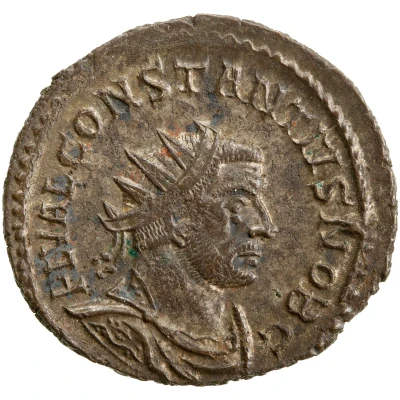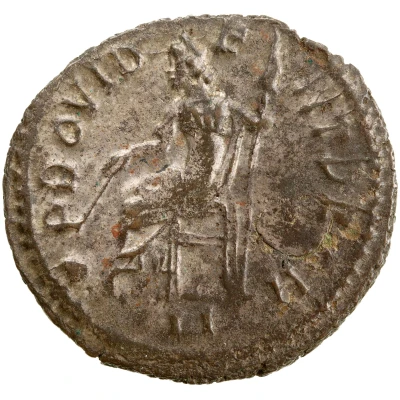Antoninianus - Constantius I PROVIDENT DEORVM or PROVIDENTIA DEORVM; Providentia
| Silver | - | - |
| Issuer | Rome › Roman Empire (27 BC - 395 AD) |
|---|---|
| Caesar | Constantius I Chlorus (Flavius Valerius Constantius) (293-305) |
| Emperor | Diocletian (Gaius Aurelius Valerius Diocletianus) (284-305) Maximian Herculius (Marcus Aurelius Valerius Maximianus) (286-305) |
| Type | Standard circulation coin |
| Years | 293-294 |
| Value | Antoninianus (1) |
| Currency | Antoninianus, Reform of Caracalla (AD 215 – 301) |
| Composition | Silver |
| Shape | Round (irregular) |
| Technique | Hammered |
| Demonetized | Yes |
| Updated | 2024-10-05 |
| Numista | N#306691 |
|---|---|
| Rarity index | 100% |
Reverse
Providentia, draped, seated left, holding baton in right hand and sceptre in left hand; at foot, globe.
Script: Latin
Lettering:
PROVIDENT DEORVM or PROVIDENTIA DEORVM
-/-//B
Translation:
Providentia Deorum.
Foresight of the gods.
Comment
Source:Online Coins of the Roman Empire (OCRE)
Interesting fact
The Antoninianus coin was introduced by the Roman Emperor Caracalla in 215 AD as a replacement for the denarius, which had been the standard Roman currency for over 400 years. The Antoninianus was made of silver and had a higher purity level than the denarius, which had been debased over time. The coin was named after Caracalla's adoptive father, Antoninus Pius, and it became the main currency of the Roman Empire for over a century. The Constantius I Antoninianus coin that , which features the emperor Constantius I (293-306 AD) and the goddess Providentia on the reverse, is a rare and valuable example of this coinage. It's interesting to note that the Providentia design was used on many Antoninianus coins during this period, indicating the importance of this goddess in Roman culture and religion.

